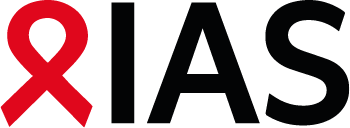Share Abstract
Safety of Receipt of Antiretroviral Drugs during Pregnancy among HIV-1-Infected Women in Latin America and the Caribbean: The NICHD International Site Development Initiative (NISDI) Perinatal Study
Abstract Content:
Introduction: Our objectives were to assess the association between ARVs during pregnancy and adverse events through 6-12 weeks postpartum among HIV-1-infected women in Latin America and the Caribbean.
Methods: We analyzed data from a prospective cohort study of HIV-1-infected women and their infants in Argentina, the Bahamas, Brazil and Mexico (NISDI Perinatal Study). This analysis included ARV-naïve women with HIV-1 infection diagnosed during the index pregnancy followed for at least 6-12 weeks after delivery. Maternal clinical (rash, nausea and/or vomiting, headache) and laboratory (elevated SGPT and SGOT, anemia, leucopenia, thrombocytopenia) adverse events at hospital discharge and at 6-12 weeks postpartum were analyzed.
Results: Of 743 women enrolled as of October 2004, 289 met the inclusion criteria. Most (91%) had mild clinical disease (CDC Category A) at enrollment. Receipt of ARVs during pregnancy was categorized according to the most complex regimen received: Group1: ZDV alone or 2 NRTIs [43 (15%)]; Group2: 2 NRTIs + 1 NNRTI [132 (46%)]; Group3: 2 NRTIs + 1 PI [105 (36%)]; or none/other [9 (3%)]. Significant findings at hospital discharge and at 6-12 weeks postpartum included the following. At hospital discharge, anemia was most common in Group1 (57%) vs. Group2 or Group3 (p = 0.002), while leucopenia was least common in Group3 (5.0%) vs. Group1 or Group2 (p = 0.013). At 6-12 weeks postpartum, rash was most common in Group2 (4.8%) vs. Group1 or Group3 (p = 0.034), while headache was least common in Group1 (4.7%) vs. Group2 or Group3 (p = 0.028); elevated SGPT (18.6%) (p = 0.015) and SGOT (16.3%) (p = 0.014) values were most common in Group1 vs. Group2 and Group3.
Conclusions: Significant associations between maternal ARV regimens during pregnancy and clinical/laboratory abnormalities were observed. Further analyses are underway to more completely characterize toxicities according to ARV regimen.
Methods: We analyzed data from a prospective cohort study of HIV-1-infected women and their infants in Argentina, the Bahamas, Brazil and Mexico (NISDI Perinatal Study). This analysis included ARV-naïve women with HIV-1 infection diagnosed during the index pregnancy followed for at least 6-12 weeks after delivery. Maternal clinical (rash, nausea and/or vomiting, headache) and laboratory (elevated SGPT and SGOT, anemia, leucopenia, thrombocytopenia) adverse events at hospital discharge and at 6-12 weeks postpartum were analyzed.
Results: Of 743 women enrolled as of October 2004, 289 met the inclusion criteria. Most (91%) had mild clinical disease (CDC Category A) at enrollment. Receipt of ARVs during pregnancy was categorized according to the most complex regimen received: Group1: ZDV alone or 2 NRTIs [43 (15%)]; Group2: 2 NRTIs + 1 NNRTI [132 (46%)]; Group3: 2 NRTIs + 1 PI [105 (36%)]; or none/other [9 (3%)]. Significant findings at hospital discharge and at 6-12 weeks postpartum included the following. At hospital discharge, anemia was most common in Group1 (57%) vs. Group2 or Group3 (p = 0.002), while leucopenia was least common in Group3 (5.0%) vs. Group1 or Group2 (p = 0.013). At 6-12 weeks postpartum, rash was most common in Group2 (4.8%) vs. Group1 or Group3 (p = 0.034), while headache was least common in Group1 (4.7%) vs. Group2 or Group3 (p = 0.028); elevated SGPT (18.6%) (p = 0.015) and SGOT (16.3%) (p = 0.014) values were most common in Group1 vs. Group2 and Group3.
Conclusions: Significant associations between maternal ARV regimens during pregnancy and clinical/laboratory abnormalities were observed. Further analyses are underway to more completely characterize toxicities according to ARV regimen.
